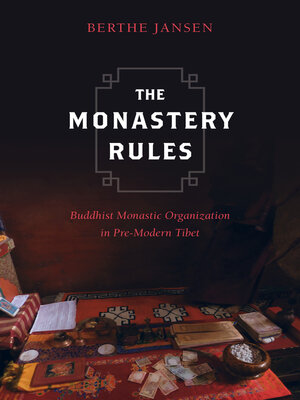The Monastery Rules
ebook ∣ Buddhist Monastic Organization in Pre-Modern Tibet · South Asia Across the Disciplines
By Berthe Jansen

Sign up to save your library
With an OverDrive account, you can save your favorite libraries for at-a-glance information about availability. Find out more about OverDrive accounts.
Find this title in Libby, the library reading app by OverDrive.



Search for a digital library with this title
Title found at these libraries:
| Library Name | Distance |
|---|---|
| Loading... |
A free ebook version of this title is available through Luminos, University of California Press's Open Access publishing program. Visit www.luminosoa.org to learn more.
The Monastery Rules discusses the position of the monasteries in pre-1950s Tibetan Buddhist societies and how that position was informed by the far-reaching relationship of monastic Buddhism with Tibetan society, economy, law, and culture. Jansen focuses her study on monastic guidelines, or bca' yig. The first study of its kind to examine the genre in detail, the book contains an exploration of its parallels in other Buddhist cultures, its connection to the Vinaya, and its value as socio-historical source-material. The guidelines are witness to certain socio-economic changes, while also containing rules that aim to change the monastery in order to preserve it. Jansen argues that the monastic institutions' influence on society was maintained not merely due to prevailing power-relations, but also because of certain deep-rooted Buddhist beliefs.
The Monastery Rules discusses the position of the monasteries in pre-1950s Tibetan Buddhist societies and how that position was informed by the far-reaching relationship of monastic Buddhism with Tibetan society, economy, law, and culture. Jansen focuses her study on monastic guidelines, or bca' yig. The first study of its kind to examine the genre in detail, the book contains an exploration of its parallels in other Buddhist cultures, its connection to the Vinaya, and its value as socio-historical source-material. The guidelines are witness to certain socio-economic changes, while also containing rules that aim to change the monastery in order to preserve it. Jansen argues that the monastic institutions' influence on society was maintained not merely due to prevailing power-relations, but also because of certain deep-rooted Buddhist beliefs.







